Categories
Product Recommended
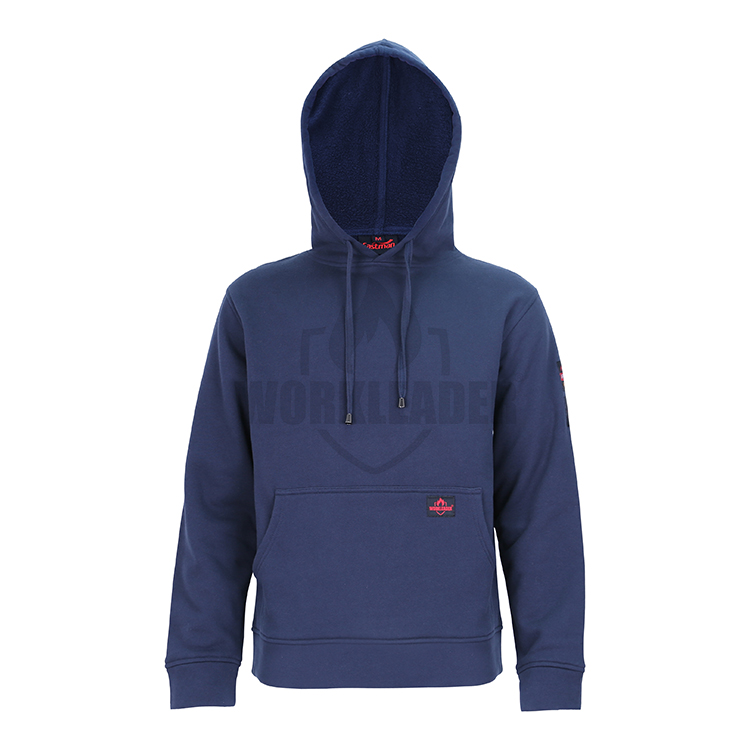
Flame Resistant Fleece Hoodie Suit
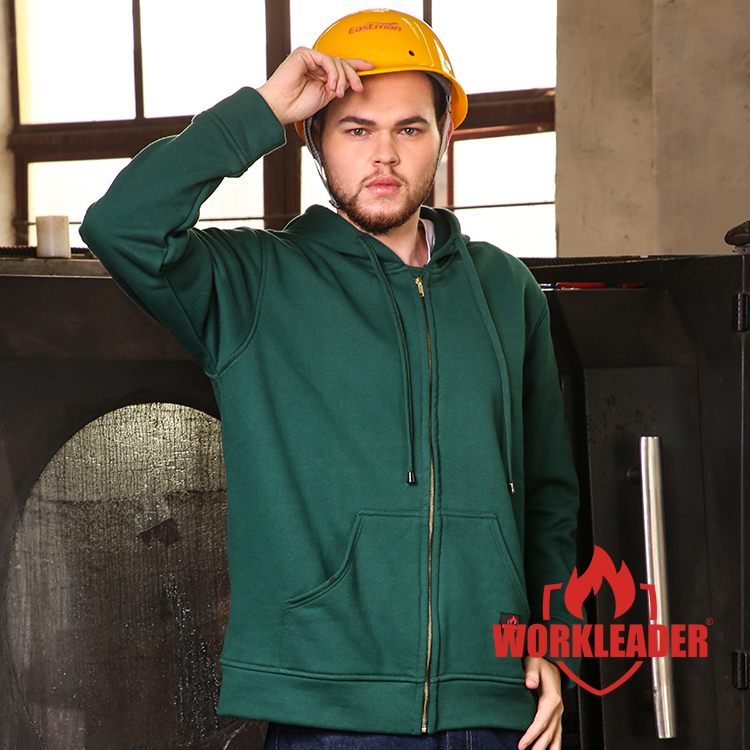
Knit 100% Catton Fire Retardant Hood
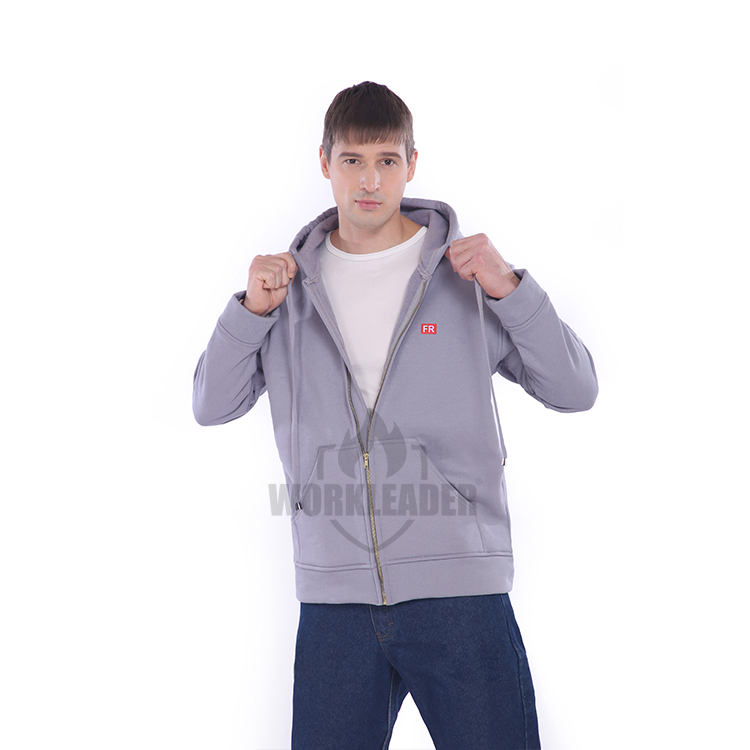
Flame Retardant Hoodies For Worker
FR Shirt & T-shirt
What Is Fr Shirt
FR shirts stand as a critical defense against the dangers of fire and heat. Industries such as oil and gas, electrical maintenance, and manufacturing require flame protection safety measures due to the high risk of flash fires and electrical arcs. In these settings, FR shirts are not just another piece of uniform; they are lifesavers. These specialized garments resist ignition and self-extinguish flames, reducing the risk of burn injuries and providing workers with precious time to escape potential hazards.
Benefits Of FR Shirt
- Reduced risk of burns
- FR shirt can provide protection against burns and other injuries resulting from exposure to heat or flames. It can slow down or prevent the spread of flames and provide a barrier between the wearer's skin and the heat source.
- Compliance with safety regulations/dt>
- In many industries, wearing FR shirt clothing is mandatory, either by law or as part of safety regulations. Compliance with these regulations is essential for the safety of workers and the company as a whole.
- Durability
- FR shirt is designed to be durable and long-lasting. It is typically made of materials that are resistant to wear and tear, ensuring that it can withstand the rigors of daily use in a variety of work environments.
- Comfort
- Despite its protective properties, FR shirt can be designed to be comfortable for workers to wear. Modern FR shirt is often made from lightweight, breathable materials that allow for ventilation and airflow, reducing discomfort and allowing for ease of movement.
Why Choose Us
-
01/
Professional team and equipmentWith more than 30 years of production experience, we have a mature team and equipment. From fabrics to garments, we use smart machines. We are efficient and cost-effective.
-
02/
MarketOur garments have been exported to many countries and regions in the world, such as Europe, North America, South America, Middle East, etc. We export 150 X 40 FCL every year.
-
03/
Provide the best quality productsWe provide the highest quality fibers, fabrics and finishes to create the most comfortable, durable and ultimate protective PPE and FR clothing.
-
04/
Our serviceYour satisfaction is always our top priority. If you need real-time assistance, please feel free to contact us through our customer service hotline 0371-86173598.
Features And Functions Of FR Shirts
Styles And Closures

- Button-up
Offers a traditional look and adjustable fit, often preferred for professional settings.
Pullover
Easier to put on and remove, suitable for situations requiring quick response times.
Mandarin collar
Provides comfort and a close fit, often used in conjunction with other protective gear.
Specific Features
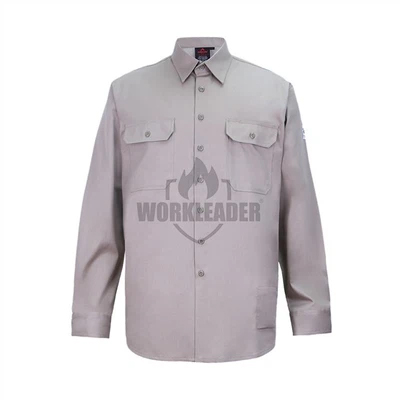
- Comfort collars
Designed to minimize irritation and chafing around the neck.
Reinforced elbows
Offer additional protection and durability in areas prone to wear and tear.
Hidden pockets
Securely store essential tools or equipment without compromising the clean look of the shirt.
Flame-retardant reflective tape
Enhances visibility in low-light conditions, crucial for firefighters and other personnel working in hazardous environments.
Do Fr Shirts Need To Be Tucked In?
Yes, wearing an FR shirt untucked dramatically decreases its effectiveness in protecting the wearer from fire and electrical hazards. An untucked FR shirt leaves the wearer's stomach and torso susceptible to an arc-flash or flash fire hazard, even if it doesn't directly strike the exposed area. An electrical or fire hazard can travel through the garment toward the opening and penetrate the protective layer of garments rendering the FR shirt's protective qualities moot.
How Do I Know If An Fr Shirt Is Compliant With Safety Standards?
Look for labels or tags on the FR shirt that indicate compliance with relevant standards. These may mention organizations like NFPA and specific standards they meet (e.g., NFPA 70E). Understanding these certifications can help you choose a shirt that offers the necessary level of protection for your needs.
How Should an FR Shirt Fit?
FR shirts should fit your body well with enough room to create a thin layer of air between the FR fabric and your undergarments. That layer acts as insulation in a flash fire and can reduce the amount of heat that can transfer or pass through the protective garment in a thermal event. But FR shirt should not be so large as to be loose and baggy, which raises the risk of getting clothing caught in equipment and machinery.
How To Choose The Right FR Shirt
Compliance with safety standards
The first and foremost factor to consider when choosing an FR shirt is its compliance with safety standards. Different industries may have specific regulations and certifications that FR clothing must meet to ensure adequate protection. Look for shirts that adhere to recognized standards such as NFPA 2112 or NFPA 70E in the United States or EN ISO 11612 in Europe.
Fabric material
The fabric material plays a crucial role in the effectiveness of an FR shirt. Common materials for FR shirts include treated cotton, modacrylic, and blends incorporating flame-resistant fibers. Each material has its unique properties, affecting factors such as comfort, breathability, and durability. Assess the specific requirements of the work environment to determine the most suitable fabric.
Comfort and wearability
Workers are more likely to wear protective clothing consistently if it is comfortable. Consider factors such as the weight, flexibility, and breathability of the FR shirt. Lightweight and breathable fabrics enhance comfort, especially in hot and humid conditions. Additionally, features like vented backs, moisture-wicking properties, and a proper fit contribute to overall wearability.
Durability and longevity
The durability of an FR shirt is crucial for its long-term effectiveness. Evaluate the construction quality, stitching, and reinforcements in high-stress areas. Look for shirts designed to withstand the rigors of the work environment, including frequent washing and exposure to various elements. Durable FR shirts not only provide lasting protection but also contribute to cost-effectiveness.
ATPV and EBT ratings
The Arc Thermal Performance Value (ATPV) and Energy Breakopen Threshold (EBT) are measurements used to assess the protective capabilities of FR clothing. ATPV indicates the level of protection against thermal incidents, while EBT identifies the point at which the fabric may break open, exposing the wearer. Higher ATPV and EBT ratings generally signify greater protection.
Environmental factors
Evaluate the work environment and the specific hazards workers may encounter. For example, workers in petrochemical industries may face different challenges compared to those in electrical utilities. Choose an FR shirt that addresses the environmental factors relevant to the job, such as exposure to chemicals, flames, or electric arcs.
Layering compatibility
Depending on the work environment, workers may need to layer their FR clothing to achieve the desired level of protection. Consider the compatibility of the chosen FR shirt with other PPE (Personal Protective Equipment) items, such as jackets or coveralls, to ensure seamless layering without compromising safety.
Types Of FR Shirt
-
FR work shirts
These shirts are designed for heavy-duty work and often feature reinforced seams and pockets and FR properties that protect against heat and flame hazards.
-
FR henley shirts
These shirts have a simple, casual design and are often made from soft and comfortable FR fabric that protects against heat and flame hazards.
-
FR t-shirts
These shirts have a simple, casual design and are made from lightweight FR fabric that protects against heat and flame hazards.s
-
FR polo shirts
These shirts have a collared design and are often made from breathable FR fabric that protects against heat and flame hazards.
Material Of FR Shirt
Aramids
Aramid fibers are made from a polymer called poly-paraphenylene terephthalamide, a type of synthetic material known for its high strength and heat resistance.
Coated nylon and polyester
Most people are familiar with nylon and polyester since they are two of the most commonly used synthetic textiles.
Nomex
Designed to be lightweight yet strong enough to withstand the heat and flames of a jet engine.
PBI
Polybenzimidazole is a synthetic fiber and most people call it PBI for short. As with other materials in its class, PBI is strong, durable, and heat resistant.
Modacrylic
Not to be confused with acrylic, modacrylic is another flame-resistant synthetic fiber. It is made from various chemical monomers, including acrylonitrile and vinyl chloride.
Application of FR Shirt
Oil and gas industry
FR shirts play a crucial role in the oil and gas sector, providing protection against flash fires that can occur during drilling, extraction, and refining processes. The inherent flame resistance of FR shirts ensures that workers are shielded from the intense heat generated in these environments.
Construction and welding
In construction and welding environments, where sparks and molten metal pose significant risks, FR shirts act as a protective barrier. These shirts are constructed with durable fabrics that resist ignition, preventing burns and injuries caused by contact with hot materials.
Electrical utilities
Electrical utilities present unique hazards, particularly the risk of arc flashes. FR shirts are designed to offer defense against these electrical events, preventing severe burns and injuries that can result from exposure to high-energy arcs.
Aerospace and aviation
In the aerospace and aviation industry, where maintenance activities often take place in hangars with aviation fuels and other flammable substances, FR shirts contribute to the safety of workers by preventing ignition in case of accidental fuel exposure.
How to Wash a FR Shirt
Pre-treat stains
Before washing FR shirt, it is advisable to pre-treat any stains or heavily soiled areas. However, it is important to note that you should avoid using harsh chemicals or bleach, as they can diminish the fabric's flame-resistant properties. Instead, opt for the Best Detergent for FR shirt or specialized stain removers recommended for FR clothing.
Separate FR shirt from regular laundry
To prevent contamination and potential damage, always wash FR shirt separately from regular laundry. Mixing FR shirt with non-FR shirts can introduce substances that could compromise flame-resistant properties. It is best to designate a separate load or washing machine solely for FR shirt.
Choose mild detergents
When selecting a detergent for Washing Fire Retardant Fabric, opt for mild, non-ionic detergents. Harsh FR shirt Detergent contains additives, bleach, or hydrogen peroxide that can degrade the fabric's flame-resistant properties. Mild FR laundry detergent help remove dirt and stains without compromising the integrity of the FR shirt.
Wash in cold water
To preserve the FR shirts flame-resistant properties, always wash it in cold water. Hot water can cause the fabric to shrink or lose its protective qualities. Cold water is gentle on the fabric and helps maintain its effectiveness in shielding against flames.
Gentle cycle and reduced spin
When washing FR shirt, choose the gentle cycle option on your washing machine. The gentle cycle minimizes mechanical stress on the fabric, reducing the risk of wear and tear. Additionally, opt for a reduced spin cycle to avoid excessive agitation that could damage the garment.
Line dry or tumble dry on low heat
After washing, it is crucial to dry FR shirt properly. Line Drying is the preferred method, as it minimizes exposure to heat and prevents potential damage. If using a dryer, choose the lowest heat setting possible. Avoid high heat, as it can shrink or weaken the fabric, compromising its protective properties.
How To Store FR Shirts When Not In Use
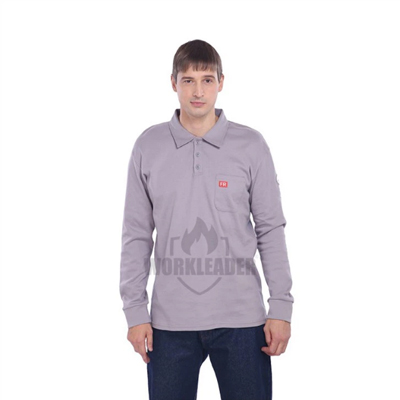
- When FR shirt is not in use, it is important to store it properly. Keep shirts in a clean, dry area away from direct sunlight, moisture, and chemicals. Storing them in a dedicated closet or garment bag can help maintain their quality and extend their lifespan. Properly washing and maintaining FR shirts is essential for preserving its flame-resistant properties and ensuring the safety of individuals working in hazardous environments.
FAQ
-
A: FR vests are made from materials like aramid fibers (e.g., Nomex), modacrylic blends, FR-treated cotton, polybenzimidazole (PBI), and Kevlar. These materials are chosen for their flame resistance, durability, and comfort.
-
A: Made of flame-resistant fibers that allow it to resist ignition or quickly self-extinguish if it does catch fire. The fibers also resist melting, tearing, or breaking and are thermally insulated to protect the wearer from heat and life-threatening burns.
-
A: To choose the right size FR vest, measure your chest circumference and compare it to the sizing chart provided by the manufacturer. Ensure the vest fits comfortably over your regular work clothes without being too tight or too loose, allowing for ease of movement and layering if necessary.
-
A: FR vests are typically designed to be worn over regular clothing. They should fit comfortably over work shirts or jackets while providing the necessary protection. It's important to ensure the vest covers the torso adequately without hindering movement.
-
A: It's clear that FR vest is an important factor in workplace safety. Several jobs require FR protection, including oil and gas workers, electrical utility workers, welders and fabricators, firefighters, and construction workers.
-
A: In general, look for compliance with NFPA 70E and ASTM F1506. ASTM F1506 has its own set of labeling requirements, including that the arc rating should be indicated on the garment itself. For FR Rainwear: Look for ASTM F1891 on arc flash rainwear and ASTM F2733 on flash fire rainwear.
-
A: Not all FR vests are waterproof. Some may offer water-resistant properties, but additional waterproofing treatments or layering with a waterproof jacket might be necessary for full protection in wet conditions. Always check the product specifications for water resistance.
-
A: Wash separately in a Normal or Cotton cycle at any water temperature up to a maximum of 140ºF (60ºC). Use any typical home laundry detergent. Do not use soap (tallow soap containing animal fats). Turn garments inside out before washing to reduce streaking from abrasion.
-
A: FR vests can be reused after exposure to flames if they remain intact and undamaged. However, if the vest shows signs of burns, holes, or significant wear, it should be replaced immediately to ensure ongoing protection.
-
A: Look for features such as durable and flame-resistant materials, reinforced stitching, multiple pockets, high-visibility options, comfortable fit, adjustable closures, and certifications indicating compliance with safety standards.
-
A: An FR vest is specifically designed to resist ignition and self-extinguish, providing protection against flames and heat. A regular safety vest typically focuses on visibility and may not offer any flame-resistant properties.
-
A: FR vests are available in various colors, including high-visibility options like neon yellow or orange. Color choices can help with visibility and comply with specific workplace safety requirements.
-
A: An FR vest is an important piece of personal protective equipment that protects workers from electric arc and flame hazards. They provide a barrier between the worker's body and the source of heat.
-
A: Cotton-nylon blends will generally remain flame-resistant for anywhere from 18 months to 30 months if they are washed and worn once a week. The most long-term FR fabric solution for uniforms is a synthetic blend, which can last from 24 months to four years, depending on how it is cared for.
-
A: An FR vest should fit comfortably over your work clothing without being too tight or restrictive. It should allow for a full range of motion and cover your torso adequately. Adjustable features such as straps or closures can help achieve the right fit.
-
A: Store an FR vest in a cool, dry place away from direct sunlight, chemicals, or sharp objects. Hanging the vest can help maintain its shape and prevent wrinkles or damage. Regularly inspect the vest before use to ensure it remains in good condition.
-
A: This is why manufacturers put expiration dates on vests. If the FR vest has been properly cared for it will still be good after the expiration date, but for FR vests should be replaced at regular intervals, generally every 5 years.
-
A: If the vest is too loose, it could get caught on something and cause you to stumble or lose your balance. If the vest is too tight, it will be uncomfortable and may restrict your movement. A good way to test the FR vests fit is to put it on and raise your arms above your head.
-
A: There are certain types of employees that are required to wear flame-resistant clothing, due to the nature of their jobs and the hazards they may be exposed to. This includes: Workers who are exposed to energized circuits and their parts, when operating at 600 or more volts.
-
A: Regularly clean your FR vest to remove dirt and grime that may compromise its effectiveness. However, when permanent stains, fading reflective material, wear and tear, or non-compliance with safety standards become evident, it's time to replace your FR vest.
We're professional bib overall manufacturers and suppliers in China, specialized in providing high quality products with low price. We warmly welcome you to wholesale or buy discount bib overall in stock here from our factory. Contact us for customized service.